How to outline to customers how their data will be used as part of your marketing strategy
The data we capture and collect has become a highly valuable and important part of what we do as marketers. As we’ve become increasingly connected online, marketers’ ability to collect vast amounts of data has skyrocketed to the point where we now have new and unprecedented opportunities to organize data, build marketing technology stacks and shape strategies to target consumers more effectively.

Whilst the collection of data has many benefits - from personalized content experiences to accurate analysis of consumer behaviour - it has also proved problematic. The Facebook/Cambridge Analytica scandal and Marriott International data breach are notable examples of where personal data has been used without people’s knowledge or consent. Aside from these headline stories, over the last decade, in particular, brands have been taking advantage of the lack of regulation to auto-opt users into marketing lists or share data with third parties, eroding trust and putting the value of data in jeopardy.
The introduction of the EU’s General Data Protection Regulation (GDPR) in May 2018 has gone a long way to help ensure brands have a clear set of rules and guidelines to follow in order to collect and use consumers’ data responsibly. Whilst there is still work to do, it’s clear that the regulation is having a tangible impact. The first large fines have been levied under GDPR (in July last year the UK Information Commissioner’s Office (ICO) stated its intention to fine British Airways £183m for a 2018 data breach) and we’re also seeing the ubiquitous pop-up messages on websites.
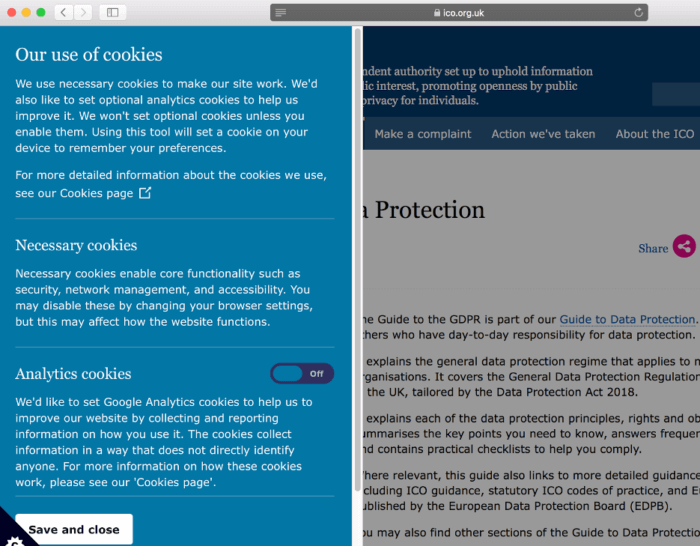
However, the DMA recently reported that 59% of senior marketing experts agree that reinforcing customers’ trust is something marketers still have to work on and will form part of their 2020 agenda. Consumer data mirrors their concerns: when customers were asked to rank how much they trust the marketing messages they see, less than half of them (38%) rated this on the higher end of the scale (five to seven out of seven), regardless of the channel.
Privacy as a marketing feature
Whilst it’s essential that brands now have an even clearer and more defined data strategy, it’s also important to be open and transparent with consumers about how their data will be used. Although information on data usage is stated in the pop-ups (such as the one shown above from the ICO) and within privacy pages, this can be easily missed.
Apple recently launched its new privacy page and it’s striking to see the way in which it has marketed privacy a feature, similar to what it would do to promote a new product upgrade or service:
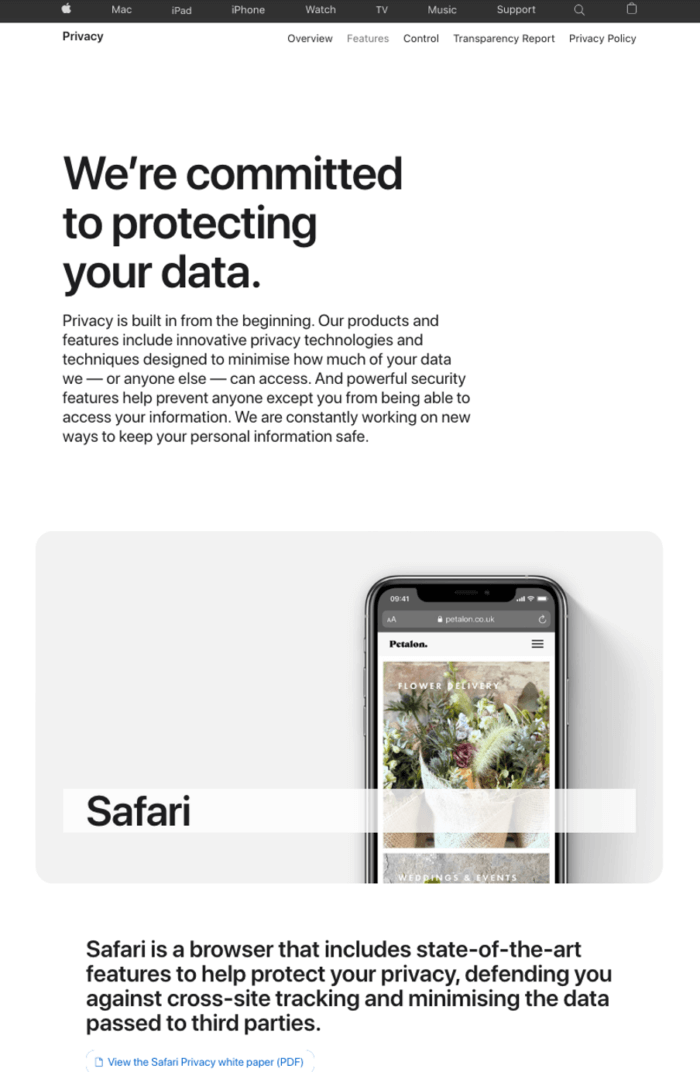
Instead of treating privacy as a simple tick box exercise, Apple has pushed it front and centre and made it into a unique selling point, strategically positioning themselves in opposition to their Silicon Valley rivals.
However, not everyone will be able to follow Apple’s lead and make such a bold statement in relation to their privacy policy. So with this in mind, here are a few ideas as to what can we do to inform our customers and prospects about how we collect data and how it will be used.
Explain the benefits of data collection
Whenever I’ve spoken to consumers about data, one of the things that regularly comes up is their lack of awareness around the benefits of data collection. Whilst many of the downsides are clear, it’s also important to highlight the advantages, too.
Download our Individual Member Resource – Managing customer data to improve marketing ROI
This guide explains the key aspects of understanding your data and improving how it is managed and used via a step-by-step plan which can be used in its entirety, or as individual delivery points to complement your own Data Management activity.
Access the
Specific benefits include personalized offers, exclusive rewards or access to a decision-making tool to make life easier, such as Spotify’s recommendation engine. Without granting access to their data, customers would not benefit from Spotify’s highly personalized music recommendations, enabling them to discover new content that is highly relevant to their interests.
Provide information on the use of cookies
Cookies are a very useful way to enable core website functionality, such as e-commerce shopping carts and website analytics. Of course, they can also be used to track user activity and re-target ads across multiple websites.
Although cookies have been around since 1994, they are not commonly understood by all internet users. It’s, therefore, worth making it crystal clear how you intend to use cookies and the ways in which visitors to your website(s) can manage them.
Most established brands will have cookie policies signposted on their homepage following the GDPR roll-out in 2018. However, some are clearer than others, and whilst it’s important to provide information, it’s also the way in which you present information that can make a difference to a consumer’s understanding.
Nationwide Building Society’s cookie and privacy page works well because it breaks all the information up into useful, accessible sections:
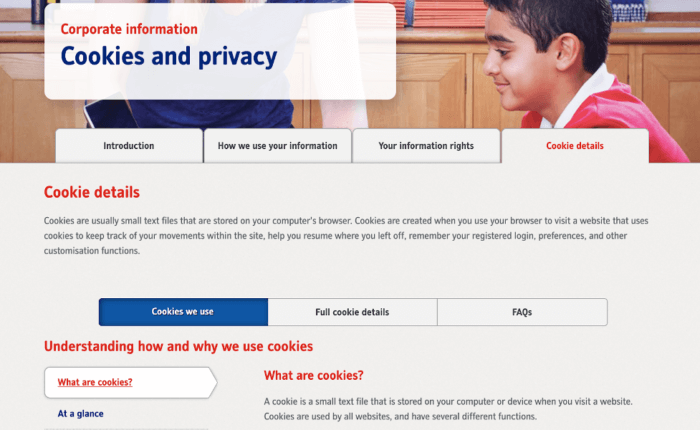
Provide tools that allow customers to edit their privacy settings
Both Apple and Nationwide’s privacy pages include a digital privacy centre to enable customers to easily understand and manage their data choices.
Google gives users the ability to configure their data settings and provides a clear data transparency policy explaining how consumers’ data is used and why:
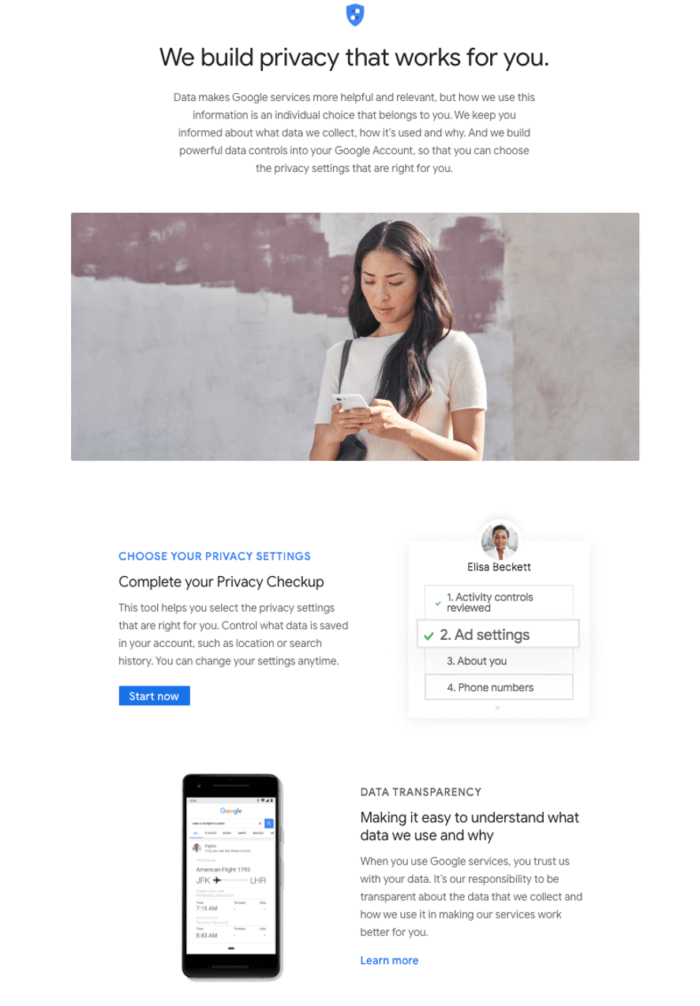
Another element to consider is a ‘download my data’ feature to show people what information a company has access to at any given time. This will be easier for some organizations to implement and manage than others but is yet another way of building trust and confidence.
If you’re a Facebook user, there are now clear steps and actions to take for accessing and downloading all the information Facebook has collected, including every message you’ve sent or been sent, the file you’ve sent or been sent, contacts in your phone and audio messages:
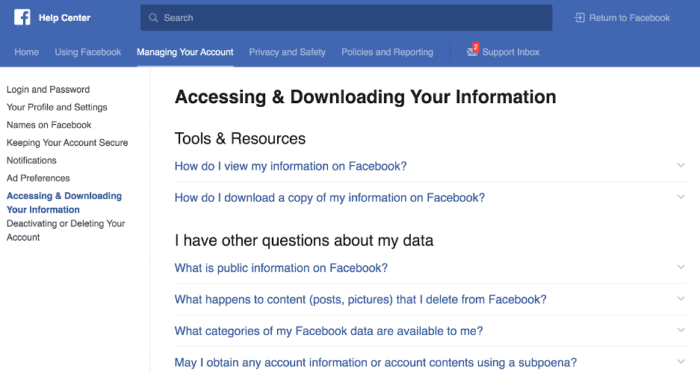
Conclusion
Data and privacy have become very hot topics over the last few years and are likely to remain top priorities for both consumers and businesses in the next 12 months and beyond. According to research between Adobe and eConsultancy, concern around how customers feel about their data and privacy ranked in the top three most significant business worries.
The onus is now on businesses to take responsibility for not only how they manage people’s data, but also how they articulate and explain how information is used. Whilst the former will be enforced by regulatory bodies such as the ICO in the UK and the Commission Nationale de l'Informatique et des Libertés (CNLI) in France, the latter is at businesses’ discretion but just as important to build trust and credibility with consumers.











